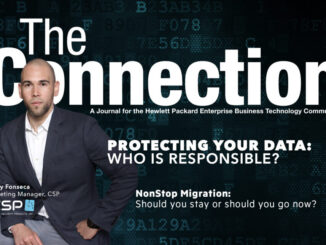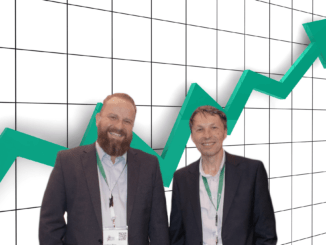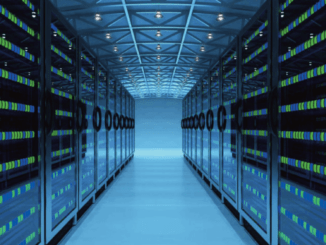
A Very Special Thank You to All of Our Sponsors at the NonStop TBC 2019
Connect WorldwideLoading… Powered By Whova Lead retrieval app for trade show

Loading… Powered By Whova Lead retrieval app for trade show

Insider Technologies is a leading software development company developing mission-critical applications for the world’s most demanding customers. The firm’s DNA is in NonStop, with products like MultiBatch and Reflex firmly cemented in its client infrastructure. Now celebrating its 30th year of operations, Richard Buckle stopped by to chat with new and veteran members of the team to hear their reflections on the past and what they anticipate for the future of NonStop. Karl Gilbank (MD), Karl Todd (Product Owner), Dave Shields (Principle Consultant) joined in the discussion.



The past several years have seen another explosion of data creation. As predicted, the amount of data captured today is at least an order of magnitude more than what was captured just 5-10 years ago. This trend is expected to continue for at least another decade. But capturing lots of bits in a bucket is a relatively easy job for most of IT. Log files and data capture mechanisms have improved to the point where facial, spatial, and other data are passively flowing into collective storage.

Data is valuable. And the more current the data is, the more valuable it is. However, if this data is trapped or “siloed” in a single system, and not available to enable other real-time business intelligence processes, then its value is limited, and competitive opportunities are missed. To avoid these missed opportunities, companies need to liberate their trapped data in real-time, and make it immediately available to other applications. For these reasons, some of the most valuable data is the data flowing through online transaction processing systems.

In a blog on the NuWave Technologies website last year, titled NonStop Applications and API Gateways -What’s the Big Deal? we looked at API Gateways, and how NonStop applications can benefit from working with them. Microservices are an important aspect of working with API Gateways, and while that article touched on microservices, it didn’t get into details.

As the support timeline winds down for NonStop Itanium platforms, more and more customers are looking forward to their next step in their NonStop evolution. The NonStop X platform running L-series is the new home where customers are moving. For some customers there is a serious issue in moving to NonStop X. They still heavily use SNA, SNAX and/or X.25 to communicate with other companies. For some banking customers this was a particular roadblock that seemed to require rework of their application and a change in how transaction information and messages will be sent to their partners. Because HPE did not port their own SNAX and X.25 products from Itanium onto the NonStop X platform, some customers felt stuck and overwhelmed by what it might involve to migrate.

Let’s talk about simplification. If you have as yet not had a chance to attend major HPE events and have missed the opportunity to hear HPE executives talking about strategy, you may have missed the emphasis HPE is placing on Hybrid IT. More importantly perhaps, you may have missed the further focusing of that emphasis to where HPE today talks about the need for IT to simplify the transformation to Hybrid IT. Almost by definition, hybrids represent more than one platform and equally by definition, complexity increases.

Every business wants more data. Data on their customers, competition, operations, processes, employees, inventory and more. Data can be used to make better-informed business decisions and provide strategic insights that give your company a competitive advantage in terms of efficiencies, enhancing the customer experience, or refining market strategy. Its uses are limitless. Over the last decade, computing power has advanced to the point where generating and storing massive amounts of data has become highly cost-efficient.


We are all aware of the inherent value of customer data within the databases that support our applications. This data identifies customers, accounts, transactional interactions and other patterns that are important for understanding customer behaviors and habits – all of which are useful for improving business processes and customer satisfaction. But what about the value of data about the data processing workloads? Is there value in understanding the processing workloads of our customers? What could we do with workload information if we had the ability to easily organize workload data into meaningful categories and groups, and view the dynamics of the processing patterns over time?

It has been quite a while since I was given the opportunity to spend as much time as I have of late in my office. There is a nice feeling about having an opportunity to follow routines. We all live busy lives and there’s no doubt that having time to kick-around ideas with colleagues represents time well spent, but even so, there really isn’t any substitute for networking with those working with the products you cover in presentations and in articles, commentaries and blog posts. Shortly, the pace picks up considerably as with the arrival of the fall late in September, the number of gatherings of NonStop user groups kicks into high gear.

There has been a lot more interest in virtual NonStop since the support of the VMware Hypervisor. I am aware of many proof of concepts testing virtual NonStop. There still seems to be some confusion around what virtual NonStop means exactly. Many jump to the conclusion that NonStop can now be run in a public cloud such as AWS or Azure. This is not currently possible since, to make virtual NonStop, actually ‘NonStop’ requires some fairly stringent configurations. These things are not readily available to configure in a public cloud. That depends on your definition of cloud; but in general, yes, if you mean a private cloud…


There are several different factors to consider when thinking about protecting your data. The subject can be complex and usually involves multiple parties.
Let’s begin with a simple thought exercise. Think about how much personal information you share on a day-to-day basis, online or otherwise. Consider who and what you interact with; applications, devices, websites, humans, corporations, etc. How much time do you spend thinking who has access to your data and what they could do with it? What are some of the things that you do to ensure you are protecting your valuable information?

Everyone and every company seem to be designing for the cloud. Of course “the Cloud” means different things to different people but in general I think we can agree that when the term comes up it means something like Amazon or Azure. One has the capability of quickly bringing up compute resources including servers, storage and networking. One will only be charged for what one uses and for how long it is used. One can stop anytime. The presumption is that this is much better than owning resources and having them sit idle, or at least not fully utilized. As usual, people want something that is available whenever they want it for as inexpensively as possible. For that they are willing to accept some risks including availability, security and an eventual, not immediate, database consistency. It is good, perhaps not great, but solidly good. NonStop is looking for customers and businesses that require great. NonStop has a long history of interfacing to “the Cloud”. In the early days Keith Moore and I were discussing the ‘Silver-Lining Architecture’ to protect resources that were on the cloud. This developed later into GuardianAngel where NonStop’s Pathway monitors were running serverclasses off platform and in the public cloud while still being controlled by NonStop with the inherent advantages of Pathmon – scale up (more instances) if response time started to slack off. Recovery in some instances failed. Automatic shutdown of instances as load decreased. Now with virtual NonStop we have real integration with a cloud, not ‘The Cloud’ (public), but a cloud (private) by allowing NonStop instances to be spun up, with several configuration requirements, but spun up nonetheless.


“You are traveling through another dimension, a dimension not only of sight and sound but of mind. A journey into a wondrous land whose boundaries are that of imagination.”
Your next stop, the datacenter.
It is full of the latest and greatest technologies. Rows and rows of servers sit surrounded by flash disk arrays and enough fiber to reach to the moon and back. This is the new home for your software, the lifeblood of your company. You reflect proudly on what you have helped to create and then, doubt begins to cloud this wonderful vision. Is my software worthy of running on all of this shiny new technology? Can my software take advantage of all of these technologies? Is my software ready to run in the cloud?
Connect Worldwide